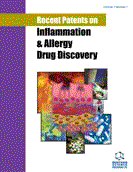Abstract
Background: Tinea capitis is a common and, at times, difficult to treat, fungal infection of the scalp.
Objective: This article aimed to provide an update on the evaluation, diagnosis, and treatment of tinea capitis.
Methods: A PubMed search was performed in Clinical Queries using the key term “tinea capitis”. The search strategy included meta-analyses, randomized controlled trials, clinical trials, observational studies, and reviews. The search was restricted to English literature. The information retrieved from the above search was used in the compilation of the present article.
Patents were searched using the key term “tinea capitis” at www.freepatentsonline.com.
Results: Tinea capitis is most often caused by Trichophyton tonsurans and Microsporum canis. The peak incidence is between 3 and 7 years of age. Non-inflammatory tinea capitis typically presents as fine scaling with single or multiple scaly patches of circular alopecia (grey patches); diffuse or patchy, fine, white, adherent scaling of the scalp resembling generalized dandruff with subtle hair loss; or single or multiple patches of well-demarcated area (s) of alopecia with fine-scale, studded with broken-off hairs at the scalp surface, resulting in the appearance of “black dots”. Inflammatory variants of tinea capitis include kerion and favus. Dermoscopy is a highly sensitive tool for the diagnosis of tinea capitis. The diagnosis can be confirmed by direct microscopic examination with a potassium hydroxide wetmount preparation and fungal culture. It is desirable to have mycologic confirmation of tinea capitis before beginning a treatment regimen. Oral antifungal therapy (terbinafine, griseofulvin, itraconazole, and fluconazole) is considered the gold standard for tinea capitis. Recent patents related to the management of tinea capitis are also discussed.
Conclusion: Tinea capitis requires systemic antifungal treatment. Although topical antifungal therapies have minimal adverse events, topical antifungal agents alone are not recommended for the treatment of tinea capitis because these agents do not penetrate the root of the hair follicles deep within the dermis. Topical antifungal therapy, however, can be used to reduce transmission of spores and can be used as adjuvant therapy to systemic antifungals. Combined therapy with topical and oral antifungals may increase the cure rate.
Keywords: Alopecia, black dots, favus, dermatophytes, fluconazole, griseofulvin, itraconazole, kerion, terbinafine.
[http://dx.doi.org/10.4103/ijt.ijt_92_15] [PMID: 28442876]
[http://dx.doi.org/10.1111/bjd.13196] [PMID: 25234064]
[http://dx.doi.org/10.1111/ijd.13423] [PMID: 27696388 ]
[PMID: 21437064 ]
[PMID: 24864605 ]
[http://dx.doi.org/10.1016/j.jpag.2013.07.003] [PMID: 24588014 ]
[PMID: 22468173]
[http://dx.doi.org/10.1590/abd1806-4841.20153787]
[http://dx.doi.org/10.1016/j.jpeds.2016.12.042] [PMID: 28088394]
[http://dx.doi.org/10.1136/bcr-2013-200594] [PMID: 24005974 ]
[http://dx.doi.org/10.1111/j.1439-0507.2009.01819.x] [PMID: 20002884]
[http://dx.doi.org/10.1111/ddg.12885] [PMID: 27509419 ]
[http://dx.doi.org/10.1590/abd1806-4841.20187435] [PMID: 29924231 ]
[http://dx.doi.org/10.1007/s11046-017-0181-1] [PMID: 28736794 ]
[http://dx.doi.org/10.1111/ijd.14352] [PMID: 30548845]
[http://dx.doi.org/10.1016/j.mycmed.2013.12.002] [PMID: 24746727]
[http://dx.doi.org/10.4103/0378-6323.152323] [PMID: 25751361 ]
[http://dx.doi.org/10.1007/s11046-013-9637-0] [PMID: 23813120]
[http://dx.doi.org/10.7860/JCDR/2015/14488.6859] [PMID: 26814801 ]
[http://dx.doi.org/10.1007/s11046-016-0004-9] [PMID: 27004946]
[http://dx.doi.org/10.1016/j.mycmed.2019.01.007] [PMID: 30799183 ]
[PMID: 24910754]
[http://dx.doi.org/10.1007/s11046-013-9685-5] [PMID: 23918090 ]
[http://dx.doi.org/10.1016/j.jpeds.2016.07.042] [PMID: 27567410 ]
[http://dx.doi.org/10.1002/14651858.CD004685.pub3] [PMID: 27169520 ]
[http://dx.doi.org/10.1016/j.jaad.2013.08.031] [PMID: 24094452 ]
[http://dx.doi.org/10.1111/j.1439-0507.2012.02219.x] [PMID: 22757767 ]
[http://dx.doi.org/10.1080/13693780701883730] [PMID: 18608883 ]
[PMID: 29777246]
[PMID: 28839385]
[PMID: 27136624]
[http://dx.doi.org/10.1007/s10354-016-0493-7] [PMID: 27510759 ]
[http://dx.doi.org/10.1186/s12887-019-1433-7] [PMID: 30795738 ]
[http://dx.doi.org/10.1111/myc.12916] [PMID: 30980768]
[http://dx.doi.org/10.18502/cmm.5.1.532] [PMID: 31049453 ]
[http://dx.doi.org/10.1111/myc.12082] [PMID: 23582018 ]
[PMID: 23710273]
[http://dx.doi.org/10.1007/s11046-016-0058-8] [PMID: 27599708]
[http://dx.doi.org/10.1111/bjd.15984] [PMID: 29313923 ]
[http://dx.doi.org/10.1111/jdv.14755] [PMID: 29237094]
[http://dx.doi.org/10.1111/1346-8138.14804] [PMID: 30768822]
[PMID: 27929276]
[PMID: 28871931]
[http://dx.doi.org/10.1503/cmaj.160665] [PMID: 28536129 ]
[http://dx.doi.org/10.1186/s12879-019-4144-7] [PMID: 31182059 ]
[http://dx.doi.org/10.1016/S1473-3099(18)30105-1] [PMID: 29976531 ]
[http://dx.doi.org/10.1016/j.idcr.2018.e00418] [PMID: 29988774 ]
[http://dx.doi.org/10.1155/2014/848763] [PMID: 25024698 ]
[http://dx.doi.org/10.1177/1203475415578051] [PMID: 26271966 ]
[http://dx.doi.org/10.1007/s10903-014-0055-2] [PMID: 24917241 ]
[http://dx.doi.org/10.1007/s12098-011-0571-1] [PMID: 21975656]
[http://dx.doi.org/10.1007/s12098-015-1760-0] [PMID: 25947263 ]
[http://dx.doi.org/10.1136/archdischild-2015-309756] [PMID: 26893521]
[PMID: 29950301]
[PMID: 29950301]
[http://dx.doi.org/10.1111/bjd.17866] [PMID: 30844082 ]
[http://dx.doi.org/10.1111/ajd.12830] [PMID: 29767838]
[http://dx.doi.org/10.1111/bjd.14413] [PMID: 26799530 ]
[http://dx.doi.org/10.1111/bjd.18305 ] [PMID: 31361332 ]
[http://dx.doi.org/10.1111/jdv.12246] [PMID: 23980908]
[http://dx.doi.org/10.1001/jamadermatol.2014.3313] [PMID: 25471133]
[http://dx.doi.org/10.1111/ajd.13127] [PMID: 31573672 ]
[http://dx.doi.org/10.1111/j.1525-1470.2011.01598.x] [PMID: 22011204 ]
[http://dx.doi.org/10.4103/ijt.ijt_25_19] [PMID: 31523114 ]
[http://dx.doi.org/10.1001/jamadermatol.2013.4352] [PMID: 23783798 ]
[http://dx.doi.org/10.1590/S0365-05962012000200022] [PMID: 22570042]
[http://dx.doi.org/10.1111/ijd.14224] [PMID: 30264392 ]
[http://dx.doi.org/10.1159/000495805] [PMID: 31049345]
[http://dx.doi.org/10.1016/j.jaad.2014.05.063] [PMID: 25500038 ]
[http://dx.doi.org/10.1186/s13256-018-1914-6]
[http://dx.doi.org/10.1111/jdv.14322] [PMID: 28499060]
[http://dx.doi.org/10.1111/j.1440-0960.2011.00850.x] [PMID: 22571559 ]
[http://dx.doi.org/10.1111/ijd.14241] [PMID: 30229878 ]
[http://dx.doi.org/10.1111/j.1365-2230.2009.03435.x] [PMID: 19663859 ]
[http://dx.doi.org/10.31128/AJGP-11-17-4416] [PMID: 31195774 ]
[http://dx.doi.org/10.5826/dpc.0603a13] [PMID: 27648387]
[http://dx.doi.org/10.1007/s12325-008-0044-8] [PMID: 18463804]
[http://dx.doi.org/10.2174/187221311795399291] [PMID: 21453266 ]
[http://dx.doi.org/10.1177/146642409311300509] [PMID: 8230078 ]
[http://dx.doi.org/10.1016/j.pedhc.2005.07.002] [PMID: 16286223 ]
[http://dx.doi.org/10.1590/abd1806-4841.20165431] [PMID: 27579765 ]
[http://dx.doi.org/10.1155/2018/9434916] [PMID: 29527381 ]
[http://dx.doi.org/10.1007/s12519-019-00304-9] [PMID: 31456157 ]
[http://dx.doi.org/10.5021/ad.2014.26.2.214] [PMID: 24882977 ]
[http://dx.doi.org/10.1016/j.mmcr.2012.12.005] [PMID: 24432210]
[PMID: 23513554]
[http://dx.doi.org/10.23736/S0392-0488.17.05673-5] [PMID: 30616337 ]
[http://dx.doi.org/10.1111/cup.12270] [PMID: 24329904]
[http://dx.doi.org/10.1111/pde.13343] [PMID: 29265536]
[http://dx.doi.org/10.1111/j.1439-0507.2009.01761.x] [PMID: 19638002 ]
[http://dx.doi.org/10.1111/pde.12235] [PMID: 24134312 ]
[http://dx.doi.org/10.1055/s-0029-1220707] [PMID: 20084590]
[http://dx.doi.org/10.4103/npmj.npmj_172_16] [PMID: 28492205 ]
[http://dx.doi.org/10.1542/peds.2010-2757] [PMID: 21727102 ]
[http://dx.doi.org/10.1097/TME.0b013e31824353d9] [PMID: 22313898 ]
[http://dx.doi.org/10.1007/s12519-018-0191-1] [PMID: 30269303 ]
[http://dx.doi.org/10.1007/s12519-016-0034-x] [PMID: 27286691]
[http://dx.doi.org/10.1111/j.1525-1470.2010.01137.x] [PMID: 20609140]
[PMID: 28925637]
[http://dx.doi.org/10.1016/j.jaad.2016.08.061] [PMID: 27816294 ]
[http://dx.doi.org/10.1111/jdv.15088] [PMID: 29797669 ]
[http://dx.doi.org/10.1111/myc.12970] [PMID: 31343780 ]
[http://dx.doi.org/10.1111/j.1525-1470.2012.01866.x] [PMID: 22994156 ]
[http://dx.doi.org/10.1111/ddg.12095] [PMID: 23575220 ]
[http://dx.doi.org/10.1111/pde.12653] [PMID: 26215468 ]
[http://dx.doi.org/10.1007/s11046-014-9849-y] [PMID: 25515244 ]
[http://dx.doi.org/10.1111/j.1525-1470.2010.01093.x] [PMID: 20735804 ]
[http://dx.doi.org/10.1046/j.1365-4362.2000.00885.x] [PMID: 10809984 ]
[http://dx.doi.org/10.1111/bjd.12015] [PMID: 22913606 ]
 80
80 6
6



















